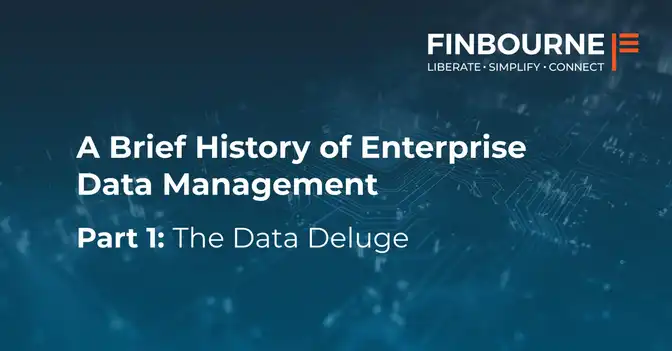Mittal Shah, Head of External Communications, FINBOURNE Technology
Over June – Pride month – my LinkedIn was flooded with rainbow logos and eye-catching Diversity and & Inclusion (D&I) pledges. I’m suspecting this to be the same for you too. Even beyond Pride, D&I forms an inescapable year-round theme across B2B and Financial Services businesses. Extraordinary, when you think of how quickly it has transitioned from being brand-critical in the consumer space, to one that businesses in the financial services industry are standing up and taking note of. As a British Asian female in the fintech space, I thoroughly welcome this embrace, but the cynic in me can’t help but wonder (much like the greenwashing of sustainable investing), how much of this is making a real impact?
To add context, I recently took part in a voluntary working group called reboot., whose intention it is to literally reboot the narrative on racism and diversity, using real life stories, case studies and research. At the latter end of 2021, I was grateful to be able to contribute (albeit in a very small way), to the creation of the ground breaking reboot. race to Equality: UK Financial Services Report – one of the largest of its kind – surveying 200 mid-to-senior level white peers and 600 ethnic minority employees in the financial services sector, to capture their views and experiences.
You see, despite the fact that D&I is now omnipresent, with numerous studies to demonstrate the benefits of a diverse workforce, how business leaders are achieving it or even whether they truly recognise its significance to the business, is still unclear. Some of this is to do with how we unpack D&I. To me diversity is an external measure that is visible and objective. Inclusion on the other hand, that’s a mindset that is learnt and open to subjectivity.
I therefore read the final cut of the report with curiosity and familiar frustration, as it confirmed what I had long suspected; while Seven in ten financial services organisations have policies on D&I, only one-third (36%) of financial services employees believe their companies are “fully committed” to enhancing D&I. The survey goes on to state that only 54% agree that their leadership team truly understands that D&I is critical to the future success of the organisation.
This is not to belittle the efforts that have been made to date, particularly where whole teams exist and budgets have been diverted for this very reason. As part of my work with reboot., I interviewed many white allies on the programs they’ve set up and lengths gone to (including initiatives like reverse mentoring), to make inclusion a working reality in their firms.
What this means is that D&I programs are in need of consistent reviews, to see how much they resonate with ethnic minority employees and white peers. It also means evaluating the support these programs are receiving from senior leadership. If need be, it means asking the honest question of whether they buy in to D&I as an objective that can move the needle for the business, or if they see it as yet another box ticking exercise.
The above suggests that there is still much ground work to do on educating leadership teams on the impact that D&I can have both for their business and society at large. Understanding this dual aspect, is something the report also acknowledges. Building a more representative industry is not simply about hitting token diversity targets, or a PR exercise, but rather reshaping the kind of industry we want to be a part of; one that is reflective of…the multiplicity of cultures we can learn from and the diversity of our society.
My immediate take away from this is that D&I is not just a business imperative but also part of the often overlooked S in ESG, making it a societal duty too. To borrow from a recent Coutts’ campaign – It is this dual purpose of ‘doing well by doing good’ that really should be the catalyst for businesses – an aspiration to level the playing field and accelerate mobility, while also achieving its end goals.
Sadly, the truth at least for the financial services sector, is that this level playing field is still an aspiration rather than a reality. According to the reboot. report the careers of ethnic minority people are being impeded, because of their race. Half of the ethnic minority employees surveyed cited their career progression as being lower or significantly lower than that of their white peers. And of the barriers stated, were unconscious – or potentially conscious – bias, the overlooking of skills and talent and a lack of internal role models.
Understanding how to overcome this with the right practices, is key to the successful implementation of D&I. Achieving this is no easy feat but in my view opens up some very real benefits that businesses cannot afford to ignore.
- Herd mentality hurts innovation
The UK boasts a diverse culture, further shaped by its rich history of immigration, leading to the influx of talent, new skillsets, culture and knowledge. It feeds into many of our industries including the fintech space. One of the many benefits it brings is diversity of thought. If we think about it, financial technology (or any technology for that matter) is where trial and error form a critical process, whether problem solving or innovating. It requires different approaches and people who are willing to step outside their comfort zones, to challenge the norm.
This includes concepts like the right to fail, something which I have come to admire here at FINBOURNE and is practiced from the top down. In essence it is simply exercising the well know adage; ‘practice makes perfect’. To get to any viable end-state or solution, there will of course be failure first, but being given the freedom to make those mistakes, so that you can learn and evolve from them, is a vital part of the journey.
Interestingly, the survey echoes this thought, and when asked, white respondents suggested access to a variety of perspectives (51%) and to more talent (48%) as the top two reasons for having a more diverse workforce, alongside positively affecting company reputation (39%) and increased creativity (36%).
Financial services firms must move away from traditional herd mentalities and group think, to curating multicultural teams of creative problem solvers and thinkers, and nurturing open environments. When you bring on board a diverse culture and embrace inclusivity, people thrive. They become genuinely excited about what they are doing, become willing to share their capabilities, and develop new ways of thinking.
At a time of the ‘Great Resignation’, opening up the talent pool and the skillsets sought across entry level positions all the way to board hires, can form a critical advantage. Especially so, for those financial services businesses facing increased scrutiny on board representation. With the arrival of activist investors and the rise of value-based investing, those businesses that do not diversify their workforce and represent a changing society (and investor base) will fall out of favour, fast.
Know Your Customer (KYC) 2.0
Picking up on that last point; we are all familiar with KYC as a regulation, but what if financial services businesses took that to a new level; KYC 2.0, as I call it. Mirroring a multicultural investor base (particularly, a new data-hungry generation that values transparency), with an equally diverse workforce, ultimately brings you closer to understanding your clients and anticipating their needs.
I mentioned value-based investing earlier, and while this is not a new phenomenon (Shariah investing has been around long before ESG even became a thing), it is one where deeper insights of the cross-section of society, will become an underestimated benefit. It opens the door to enhanced telemetry that can support new tailored products, delivering new revenue streams and a strong competitive advantage.
But this growth only comes from being open to looking outside of the traditional recruitment process, which is not always accessible to all. It requires moving away from ‘Oxbridge’-oriented graduate programs and interviews littered with loaded questions, to trialling community grass roots schemes or gender-neutral hiring initiatives. It requires putting the right inclusion and career progression practices in place, making the workplace more equitable for ethnic minority employees so that they finally can stand shoulder-to-shoulder with their white peers, and the business can optimally leverage their skills and knowledge.
However today, this is still a work in progress and if we look to the report again, it is actually white colleagues who identify organisational culture as the most common barrier to progression for their ethnic minority peers, recognising the constraints, existing corporate structures place on their colleagues. A further third of respondents include a lack of informal networks, and the flow of information. While engrained work practices were especially identified by black and Asian respondents.
Our ability to reach unity in diversity will be the beauty and test of our civilisation – Gandhi
As humans, our interactions with others, what we learn, share and bring to the table, constantly shape us as a civilisation. I have been fortunate in my working life to garner insights or be taught new skills by employees of various ethnicities, including white peers, that have changed my perspective and practice. Likewise, I have shared my unique points of view and experiences, in a way that has informed others’ thoughts and actions. These exchanges fuel creativity and productivity and set a high standard for what we can deliver in both society and work.
Ultimately the embrace of D&I within a business empowers people, so that collectively we become passionate about the difference we can make. And it starts with a strong desire to contribute not only to your employees but to the betterment of society . So when you publish that next post on D&I, ask yourself (or your management team); Is my business really thinking about D&I the way it should? And how can I help change this for the better?




